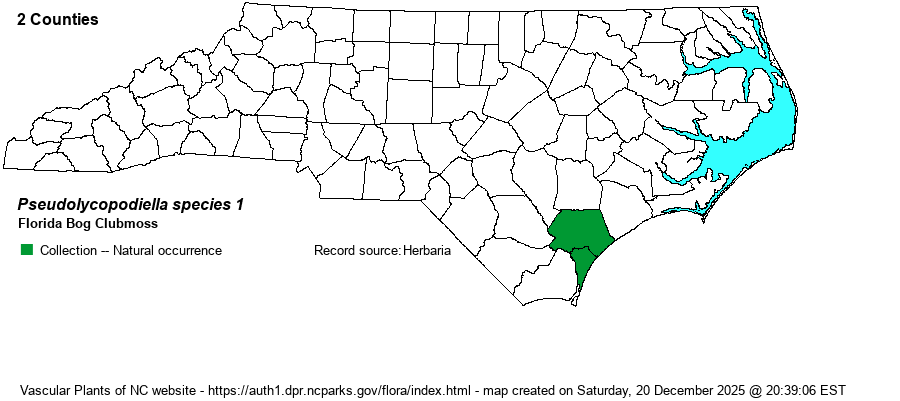| Author | | |
| Distribution | So far as is known, restricted to the southern outer Coastal Plain where it overlaps P. caroliniana. Specimens were cited by Cook (2015) from New Hanover (1840, specimen at NY) and Pender (1973, specimen at GH) counties.
Distributed from se NC to wc FL and sw LA; Greater Antilles; se Mex., Belize, Hond., Nic. | |
| Abundance | No data | |
| Habitat | Wet roadside sand (Pender County). | |
| Phenology | No data | |
| Identification | Species 1 is tetraploid, whereas caroliniana is diploid. Cook (2015) says: "It can be distinguished from P. caroliniana by its broader peduncle and strobilus and by its longer peduncle leaves and sporophylls. These are 3.0 mm or shorter in P. caroliniana and typically 3.0 mm or longer in P. floridana." | |
| Taxonomic Comments | In a 2015 Master's Thesis at Miami Univ., Ohio, Cook distinguished diploid caroliniana from tetraploid "species 1," and gave it the specific epithet of floridana ined.. Thus, this name is not formally published. Taxon Editors will follow Weakley (2020) in accepting the new species.
| |
| Other Common Name(s) | | |
| State Rank | [S2?] | |
| Global Rank | GNR | |
| State Status | | |
| US Status | | |
| USACE-agcp | | |
| USACE-emp | | |

